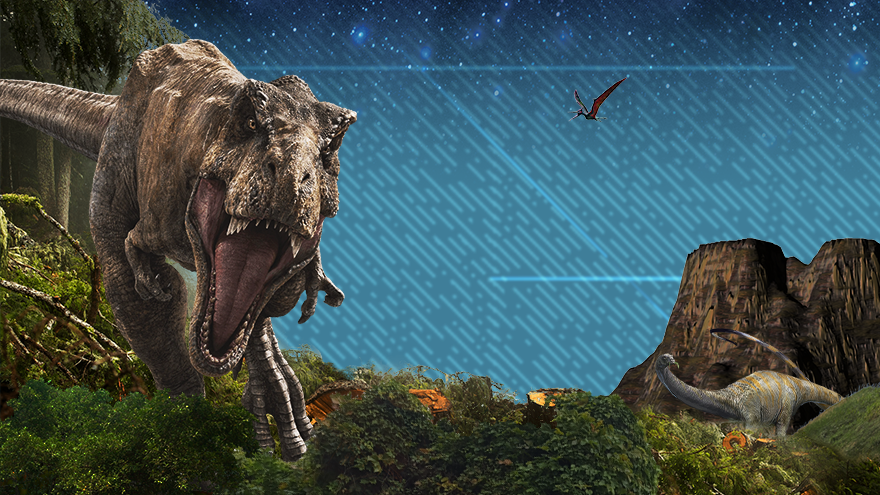Dust may have been responsible for the global winter that killed dinosaurs after an asteroid crashed into Earth 66 million years ago.
The theory was put forth in a new study published on Oct. 30.
Researchers led by Cam Berk Senel at the Royal Observatory of Belgium reopened an investigation into the impact that created Mexico’s Chicxulub crater, which scientists believe wiped out most of life on Earth, including non-avian dinosaurs.
The team of geoscientists think that the asteroid impact that created the Chicxulub crater — which is located directly south of New Orleans, across the Gulf of Mexico — threw up clouds of dust particles that blocked out the sun and may have prevented plants from photosynthesizing for up to two years after the impact.
As a result, vegetation would have died off and starved herbivorous species. The scientists say this could have ignited a catastrophic mass-extinction event that killed off 75 percent of all life on the planet, including dinosaurs.
Additionally, the researchers say, the dust may have remained in the atmosphere for up to 15 years, dropping global temperatures by as much as 59 degrees Fahrenheit.
“We need to gain deeper knowledge of what caused the global cooling or the loss of photosynthesis in order to advance our understanding of the exact killing mechanisms that followed the Chicxulub impact,” says Senel. “This is the first time that paleoclimate simulations have pointed to a 2-year suppression of photosynthetic activity and 15–20 years of dust-induced impact winter.”
Senel’s team in North Dakota studied well-preserved rock samples formed at the time of the asteroid impact. Though the U.S. state is located roughly 1,865 miles away from the crater, as a physics journal notes, the site preserved a number of “remarkable finds believed to be dated from directly after the asteroid impact in sediment layers of an ancient lake.”
The researchers estimated that the composition of the material ejected into the atmosphere was 75 percent dust and 24 percent sulfur.
“Apocalyptic” is the word Steve Brusatte used to describe the asteroid during an interview with The Guardian.
“It was the largest asteroid to hit the Earth in the last half a billion years, and it detonated with the force of over a billion nuclear bombs put together. But that’s not what really killed the dinosaurs and the 75 percent of other species that died out,” said Brusatte, a professor of paleontology and evolution at the University of Edinburgh, who was not involved in the study.
“What really drove their doom was what happened afterwards, as the dust and grime from the asteroid impact went into the atmosphere and blocked out the sun,” he said. “The Earth went dark and cold for a few years. The asteroid didn’t kill all the dinosaurs in one go, but it was a more stealthy murderer, which triggered a war of attrition that led three out of every four species to die.”

